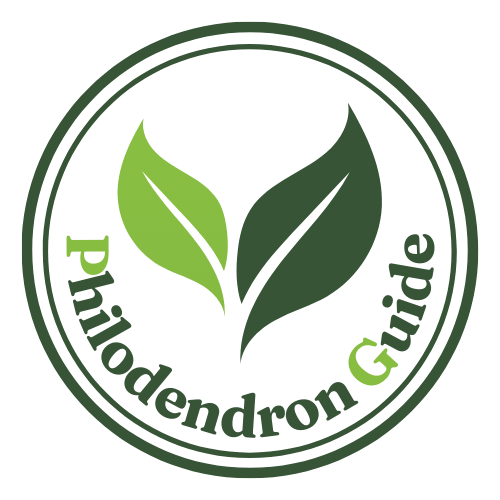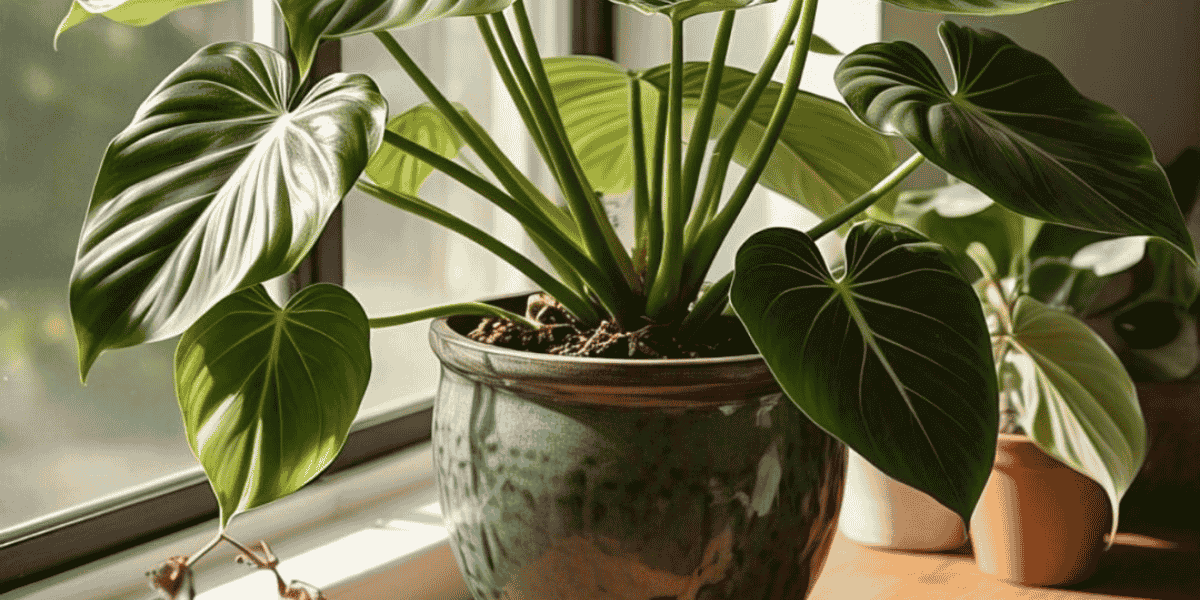Introduction:
Varieties of the Imperial Green Philodendron Plant

Imperial Green Philodendron one of over 450 species in the Philodendron family, stands out with its glossy, bright green leaves that radiate a lush, evergreen appeal.
Unlike the climbing or vining types, this self-heading variety grows upright, making it a perfect centerpiece for any room.
its adaptability to partial light conditions and preference for tropical environments make it a favorite among indoor plant enthusiasts.
Placing it in a decorative planter can enhance its aesthetic appeal, bringing a touch of the tropics indoors.
While it doesn’t require moss poles for support, ensuring it has ample space to grow will allow its foliage to flourish.
Common Name: Philodendron Imperial Green
Scientific Name: Philodendron erubescens ‘Imperial Green’
Family: Araceae
Plant Type: Perennial
Size at Maturity: 2 to 3 feet tall and wide
Light Requirements: Partial sun
Soil Preferences: Loamy, well-draining soil
Soil pH: Acidic to neutral
USDA Hardiness Zones: 9 to 11
Origin: Cultivar with no natural native range
Toxicity: Poisonous to humans and pets
Care Tips for Imperial Green Philodendron
Caring for the Imperial Green Philodendron is straightforward, making it ideal for both novice and experienced plant enthusiasts.
Light
This philodendron cultivar thrives in bright, indirect sunlight and humid conditions above 65°F, making it ideal for USDA zones 9-11.
Mature plants tolerate brief cold spells down to 25°F but should be moved indoors during extended cold.
Soil
Loamy soil is ideal for philodendron imperial green because it provides good drainage, preventing the soil from becoming too wet and reducing the risk of root rot. The plant thrives in soil that is both well-draining and rich in nutrients.
Water
Watering should be done when the top two inches of soil feel dry to the touch, ensuring the soil remains moderately moist without becoming waterlogged.
Overwatering can lead to root rot, so it’s crucial to allow the soil to dry slightly between waterings.
Fertilizer
During the growing season, typically in spring and summer, feeding the plant with a high-nitrogen fertilizer can promote lush foliage growth.
However, it’s advisable to use a diluted solution to prevent over-fertilization.
Repotting
Repotting every one to two years in a slightly larger pot can accommodate its growth and refresh the soil nutrients.
Common Issues With Imperial Green Philodendron
While the Imperial Green Philodendron is generally a low-maintenance plant, it’s not completely immune to a few care-related issues — especially when it comes to watering, light, and root health.
Over the years, I’ve seen how small changes in routine can dramatically affect the appearance of its otherwise lush green foliage.
Imperial Green Philodendron: Yellowing Leaves Causes
If you notice yellowing leaves, don’t panic — it’s often a sign that your plant is getting too much water or the potting mix is holding onto moisture for too long.
A good rule I follow is to check the top couple of inches of soil with my finger; if it still feels damp, wait a bit before watering again.
I’ve also learned to keep an eye on drainage — always using well-draining potting soil and a container with a proper hole at the bottom.
One time, I noticed a foul smell while repotting and found soft, mushy roots — a clear sign of root rot.
If this happens, carefully trim the affected roots and repot the plant in fresh, aerated soil. Make sure the new pot isn’t oversized either — it helps control moisture more effectively.
Imperial Green Philodendron: Brown Leaf Edges Fixes
Now, if your plant starts showing brown or crispy leaf edges, it might be reacting to excessive direct sunlight. I had mine near a west-facing window for a while, and the leaf tips began to dry out.
I moved it slightly away from the window where it could still enjoy bright indirect light — and the plant bounced back beautifully. Think soft morning light or filtered rays through a sheer curtain.
Frequently Asked Questions.
Q1: How often should I water my Philodendron?
A1: Water when the top two inches of soil are dry. Ensure the soil remains moderately moist but not waterlogged to prevent root rot.
Q2: Does the Imperial Philodendron require direct sunlight?
A2: No, it prefers bright, indirect sunlight. Direct sunlight can scorch its leaves.
Q3: Is the Imperial Green Philodendron toxic to pets?
A3: Yes, all parts of the plant are toxic if ingested. Keep it out of reach of pets and children.
Q4: How often should I fertilize my Imperial Green Philodendron?
A4: During the growing season (spring and summer), fertilize every 4-6 weeks with a diluted, high-nitrogen fertilizer.
Q5: Can I propagate the Imperial Green Philodendron at home?
A5: Propagation can be challenging due to its self-heading nature. It’s often propagated through tissue culture in professional settings.

